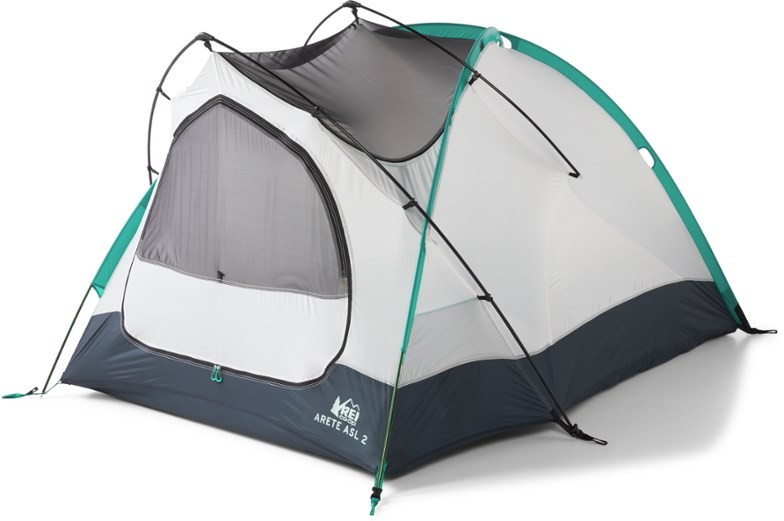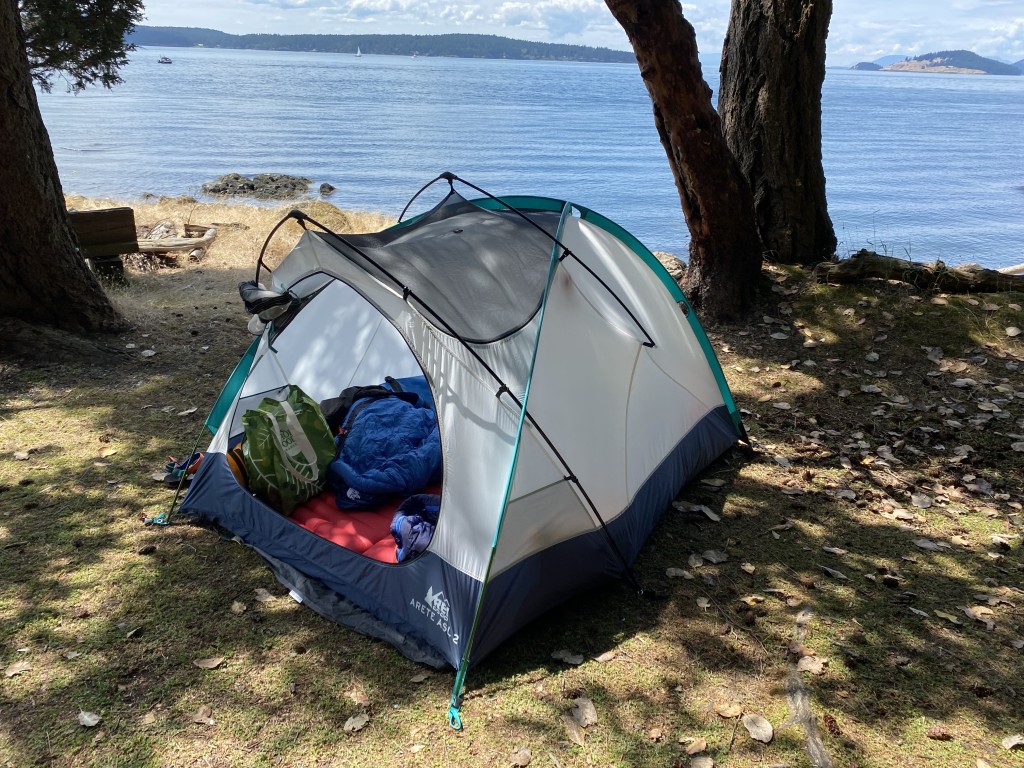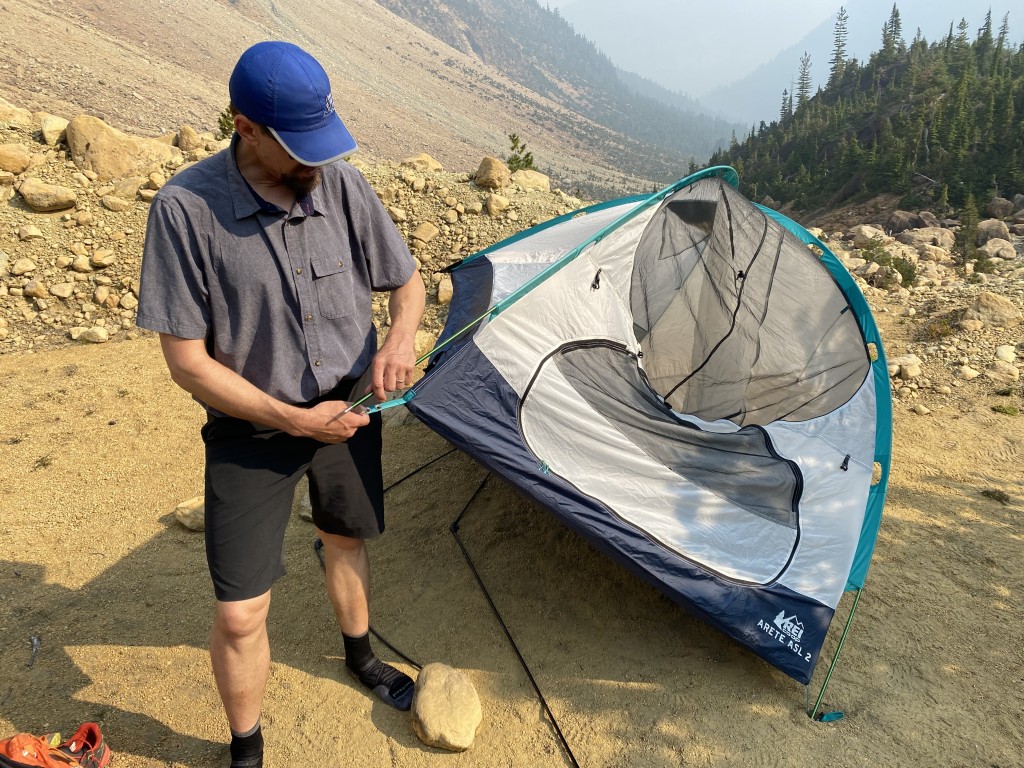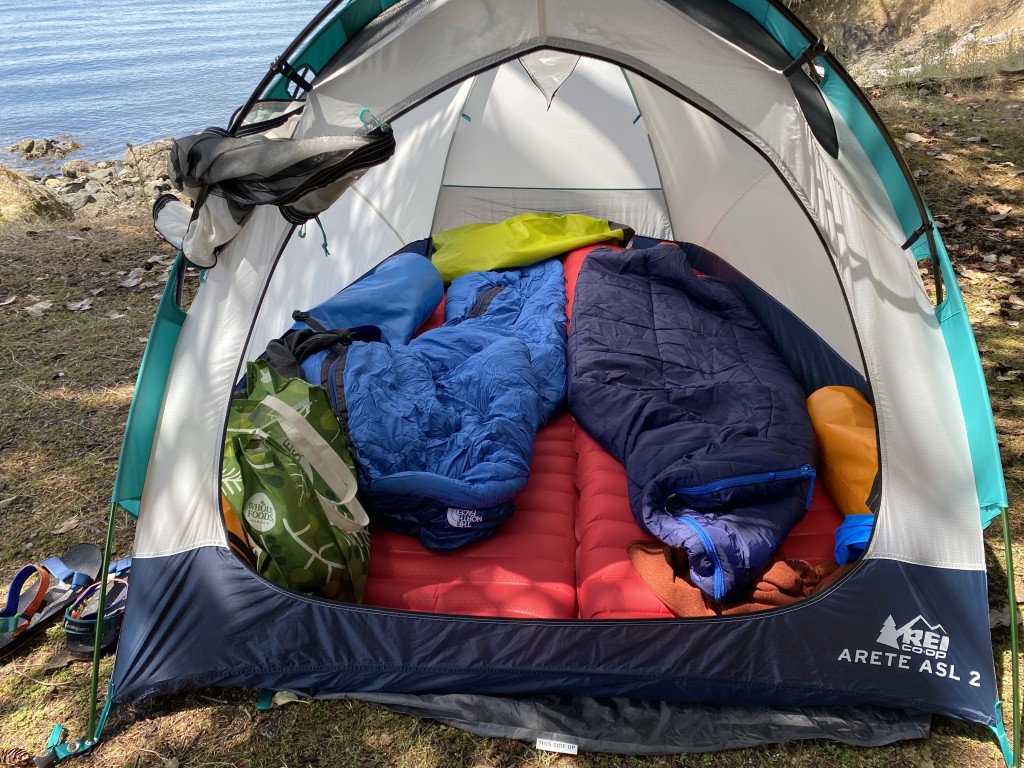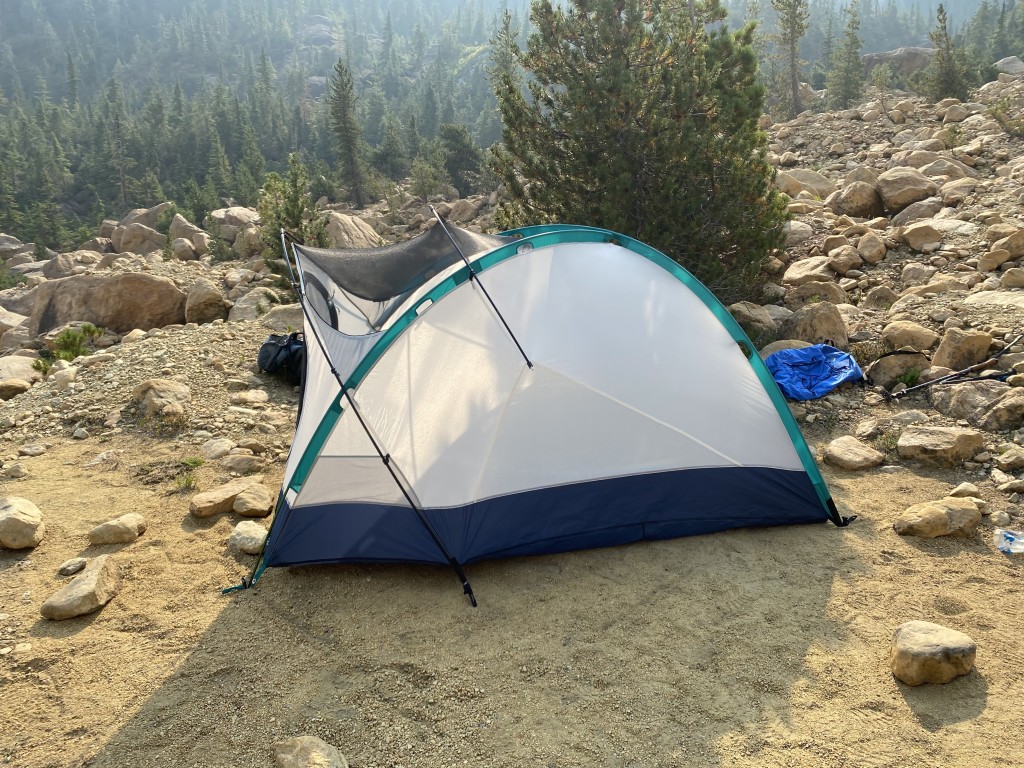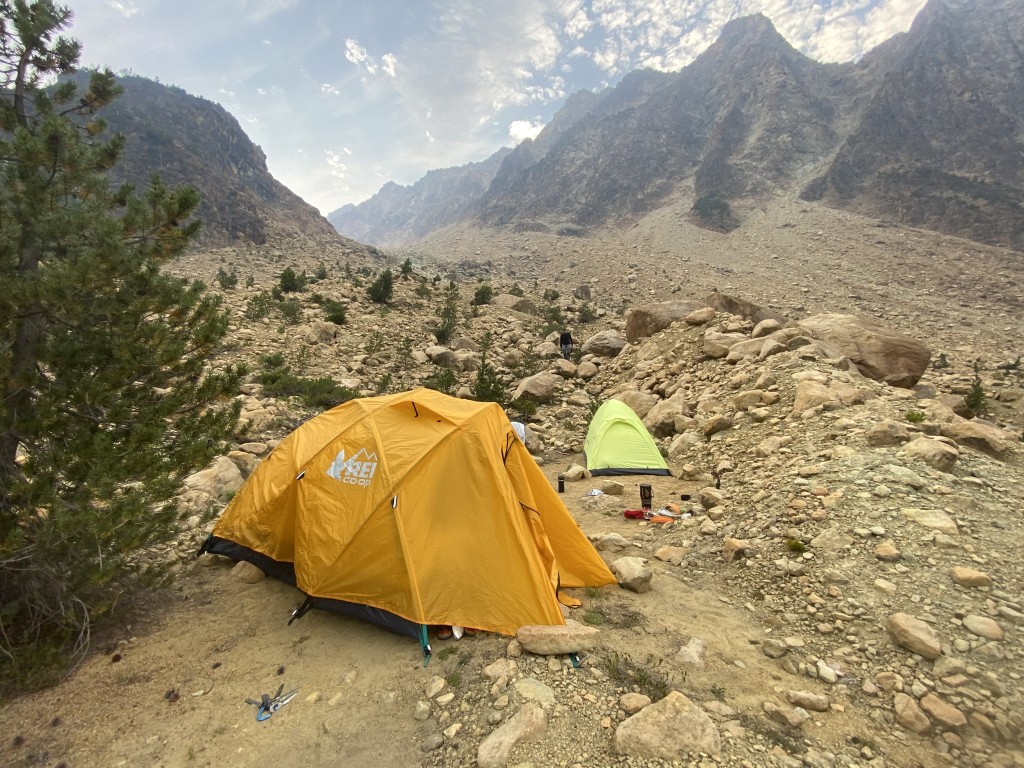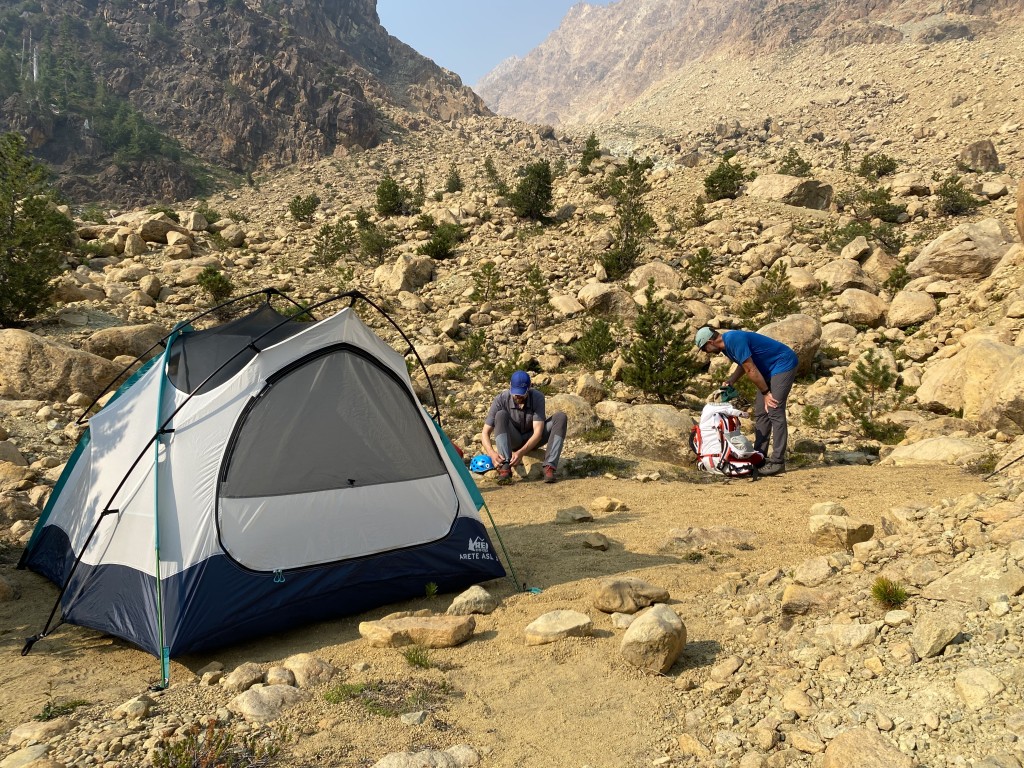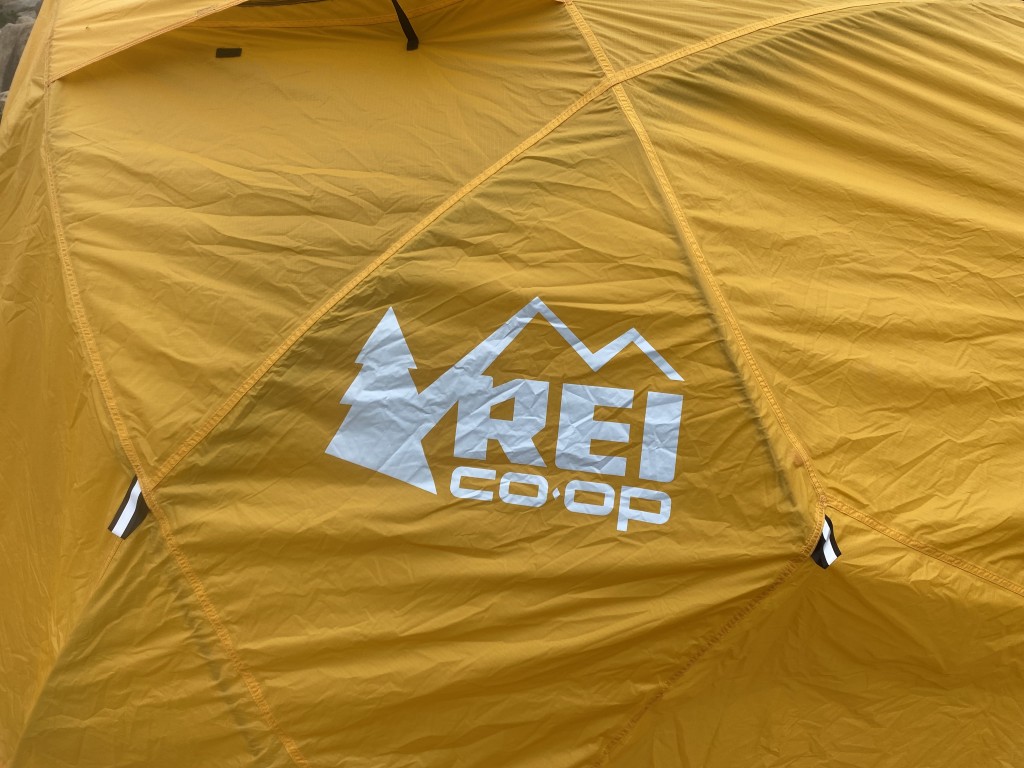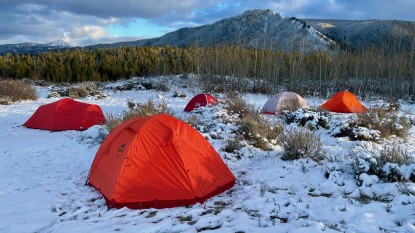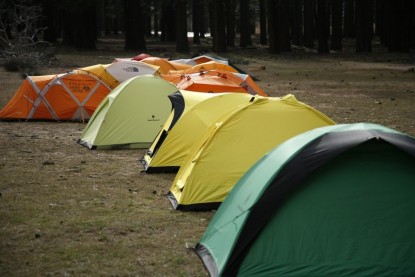REI Arete ASL 2 Review
Our Verdict
Our Analysis and Test Results
Hands-On Review of the Arete 2
The REI Arete ASL won our Best Buy award for unbeatable value. No model can match its versatility, weight, and performance for the price. It competes well with several models that are double the price. It provided enough weather protection for most people's needs at a respectable enough weight. Taller users will appreciate the longer dimensions.
Ease of Set-Up
The Arete ASL 2 is among the easiest models to set up, as long as it's not too windy. Set up starts with two poles that cross in an “X” shape with pole sleeves that are closed off on the non-door end. The poles have a blunt tip on one side that threads into the pole sleeve leading to the closed end of the sleeve.
A third pole is attached via clips and is also easy to install. The only issue we had with the set-up was in high winds. If you have one pole already in place in a sleeve and it is windy, the body of the tent has the potential to act like a sail.
This model features a half length pole secured with clips. This pole makes the tent feel much bigger inside by pulling out the side walls and creating more headroom. This .5-length pole also reduced the size of the “flat” area on the top of the tent, significantly reducing snow loading on the top of the tent.
Weather and Storm Resistance
The Arete ASL 2 offers good storm worthiness but isn't as storm worthy as the more expedition-focused models in our review. After our testing, we think the Arete is strong enough for most four-season use in the lower-48 and southern Canadian ranges and is fine for milder expedition use, such as the Corderra Blanca in Peru or Corderra Real in Bolivia. But we wouldn't take this tent up Denali or up to super-high elevations in Nepal or Pakistan.
The Arete is slightly taller than tents with a similar design, like the Hilleberg Jannu; thus, it takes more of the brunt from high winds. This model's newer 3.5 pole design sheds snow better than the previous model because it reduces the size of the “flat” area on the top of the tent. This model's relatively high profile and shape make it okay in moderate winds but slightly below average overall and not the tent we'd want if we were planning a trip to more extreme 4-season conditions but adequate for most mountain ranges in the contiguous United States. We used this tent in several savage Pacific Northwest Atmospheric river events and were impressed by how dry it kept us despite heavy rainfall.
Weight and Packed Size
At 5 pounds 10 ounces for just the body of the tent, the fly, and poles, and 6 pounds 5 ounces packed weight, meaning everything you'd likely take on an overnight trip such as stakes, pole bag, guylines, etc., the Arete ASL 2 is pretty respectable from a weight perspective.
While not as burly as most other three-pole design tents in our review, it is one of the lighter double-wall models. Only the Mountain Hardwear Outpost II (packaged Weight 5 lbs. 15 oz), the MSR Access 2 (4 pounds 1 oz), and the Sierra Designs Convert 2 (5 lbs 10 oz) are lighter. It is just light enough for overnight ski and summer mountaineering trips, where weight is more important than weather resistance.
From a packed-size perspective, this model was right smack in the middle of the pack. Overall, it proved to be less packable than most single-wall tests, save for a few larger models like the Black Diamon Ahwahnee, but more packable than most double-wall models.
Livability and Comfort
Sporting 33 square feet of interior floor space, the Arete ASL was slightly above average overall for its comfort and livability. It's comparable to similar-weight 4-season models like the Mountain Hardwear Outpost 2 or the Black Diamond Ahwahnee. It wasn't nearly as spacious as more expedited-focused models like the Mountain Hardwear Trango 2 or The North Face Mountain 25, but it isn't way off.
It has slightly above the interior room. Our taller testers appreciated the longer length. It's not much wider than two average-width pads, but it fits most users up to 6'4". Few other 4-season models can claim that.
It has great headroom because of its third crossing pole and the half-length pole, which hold more of the tent “open” around the ceiling. These poles pull out on the walls making it “feel” bigger and easier to avoid touching when damp.
Zippered mesh vents open to the fly. A short pole creates awnings for the vents so they can be left open in the rain or snow (if it's not too windy).
Durability
The Arete ASL has a relatively sturdy design, but it doesn't hold up to the elements as well as others. The materials on the Arete aren't quite as resistant to UV as some of the more expedition-focused models. It's durable for what it's intended, but its fly won't handle 3+ weeks pitched on a glacier very well. The poles are fine but not burly.
Adaptability and Versatility
Despite only one door, the Arete is one of the more versatile tents in our review. It adapts to a wide range of conditions.
It's light enough that you could use it for general-purpose backpacking but strong enough for most applications that you would consider bringing a 4 season tent for like summer-time mountaineering, snow camping, or multiday ski touring.
A favorite feature is how the entire roof area zips open to reveal a mesh roof. This allows great condensation management. We used it on several kayak camping trips where the campsites had high winds. Occasional driving rain and moist coastal air were extremely demanding on our tent's ability to handle moisture build-up. Additionally, this model features two small vents on its rain fly to help air pass through.
While its modestly sized dimensions offer good comfort, it isn't roomy enough, or is its vestibule big enough to be a true expedition tent? It would be fine for trips to places like Patagonia's Torres del Paine or the Yukon's Cirque of the Unclimbables, where you can walk around even in Inclement Weather, but it wouldn't be our first choice for the Ruth Gorge (at least with two people). We wouldn't want to take this tent to places where we know the weather can get severe. For example, this isn't the tent to take up Mt. Vinson in Antarctica, Denali, or even Mt. Rainier in winter unless we knew we had a spell of very stable weather.
Should You Buy the REI Arete ASL 2
Suppose versatility is key; your trips are generally in the Lower 48 and Southern Canadian Ranges mountains. In that case, this model is great partially if finding the best tent for the money is a critical factor. While there are better tents, no model packs as much performance and versatility for the price as this one, and it is easily the best all-around 4-season tent you could buy for the money. While not a true expedition tent, it provides respectable storm protection, top-tier versatility, and a roomy interior. Taller folks will also appreciate this model's longer-than-average length and decent headroom that performed well in moderate to strong winds. This model performed among the best for folks looking to use their tent for more traditional backpacking trips or kayak camping, where moisture management is key. This tent isn't the best for truly weight-focused trips, and many more packable, lower-weight options exist.
What other 4-season tent should you should consider besides the REI Arete ASL 2
The MSR Access 2 and Mountain Hardwear Outpost 2 are The Arete ASL 2 closest competition. These models all perform pretty closely, with the Access notably lighter and more packable but offering less internal space and headroom. The Outpost is similar in liveable space but is nearly a pound lighter. Why would you choose this tent over those? Well, it is close to both of them in performance but several hundred dollars less. As stated above, the ASL 2 is an incredible value for the level of functionality and versatility it provides. If you want something more expedition worthy, we'd recommend the Mountain Hardwear Trango 2 or a lighter expedition tent; then, we'd go with the Black Diamond Eldorado. If you want a far lighter and more compact model but still offer some versatility, we'd recommend The North Face Assault 2 FUTURELIGHT.


